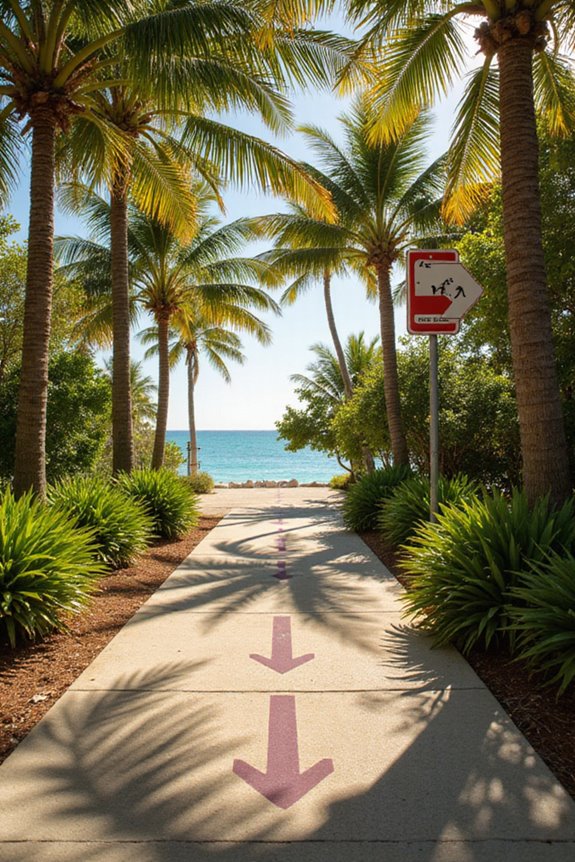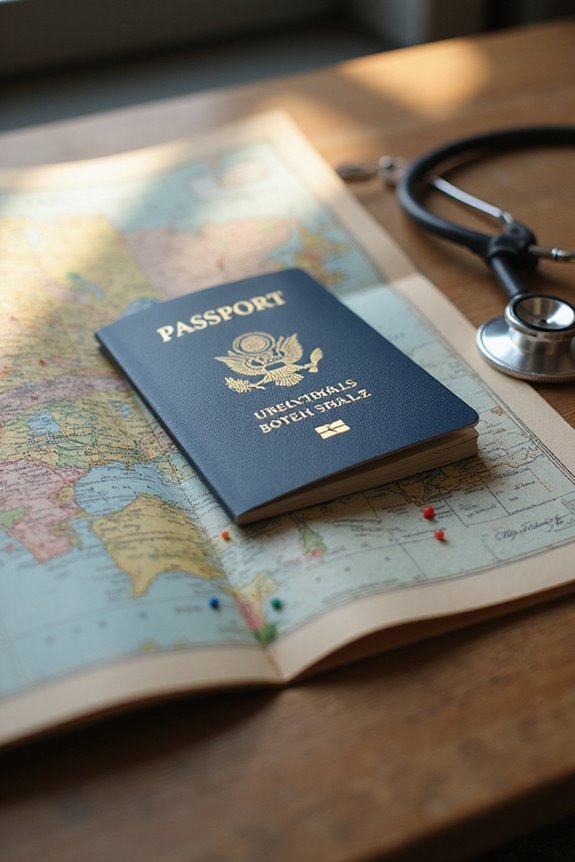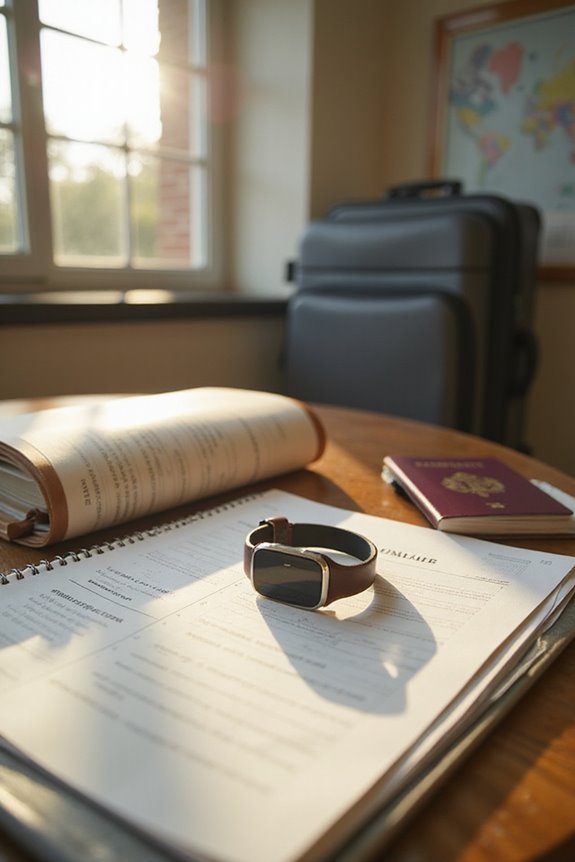When I find myself in a dangerous situation while traveling, staying calm and knowing my exit routes is key. I make sure to inform someone trustworthy about my plans, keeping my emergency contacts handy. I also stay updated on local alerts and pack essentials for quick evacuation, like my first aid kit. It’s all about being prepared, right? Want to hear more tips to keep you safe on your next adventure?
Key Takeaways
- Stay informed about local weather alerts and emergency advisories to anticipate potential dangers and evacuation needs.
- Communicate your travel plans with a trusted individual who can assist in your safety and keep track of your whereabouts.
- Familiarize yourself with local emergency protocols and identify evacuation routes before heading to your destination.
- Pack essential items, like an emergency kit, to ensure you are prepared for a quick evacuation if necessary.
- Remain calm, follow the instructions of emergency personnel, and be ready to adapt your plans based on real-time updates.
Understanding the Risks of Traveling
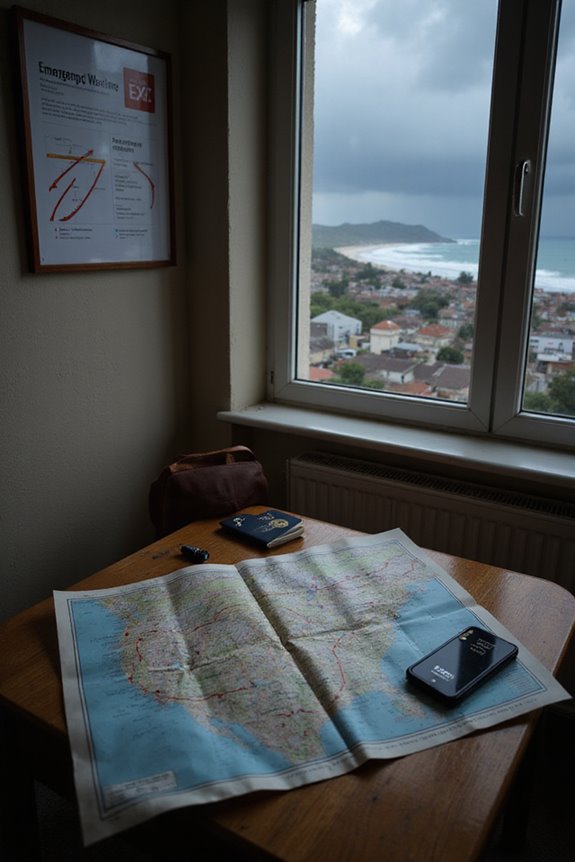
When you’re out exploring new places, it’s easy to forget that travel comes with its fair share of risks, especially if you let yourself get swept up in the excitement. I mean, one minute you’re sipping a cocktail by the beach, and the next, you hear about a hurricane forming nearby. That’s why natural disaster preparedness is essential. Staying updated with travel advisories can save you from unexpected chaos. And let’s talk about transportation safety—getting into a car, especially in a foreign land, feels thrilling but can lead to all sorts of accidents. So, whether it’s maneuvering rocky terrain after a storm or ensuring you’re buckled up, a little caution goes a long way. Portable purifiers can be a lifesaver in emergencies when access to clean drinking water is compromised, so always be prepared! Embrace adventure, but stay smart!
Importance of Emergency Medical Evacuation Coverage

Imagine this: you’re hiking in a remote jungle, the air thick with humidity and the sounds of distant wildlife, when suddenly you twist your ankle or worse. You’re miles from the nearest hospital, and that’s when the panic sets in. This is where emergency medical evacuation coverage becomes your lifeline. Without it, a single evacuation can skyrocket from $20,000 to over $200,000, leaving you in a financial mess. Trust me, having that financial protection feels like carrying a safety net. It covers everything from air ambulances to repatriation, and it’s essential, especially in remote areas where local healthcare falters. Don’t wait for a crisis to realize it’s worth every penny – it truly is peace of mind when you need it most.
Planning Ahead: Preparing for Emergencies
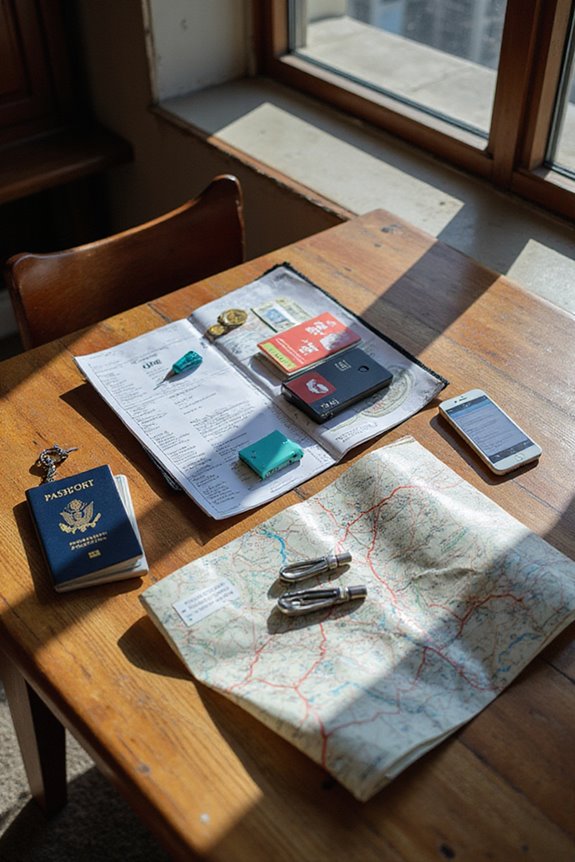
Planning ahead for emergencies can feel a bit overwhelming, but trust me, it’s worth it. Before I travel, I always research my destination—knowing local risks is essential. From political stability to natural disasters, it helps me stay informed. I carry important Travel Documentation like my passport, visas, and even copies stored digitally, just in case. Don’t forget an Emergency Kit! I pack non-perishable snacks, first aid supplies, and necessary medications. Oh, and always include a list of emergency contacts, too, because you never know who you might need. By planning ahead, I feel more in control and ready for anything. It’s about turning anxiety into empowerment, ensuring my adventures remain as enjoyable as possible!
Immediate Actions During an Emergency
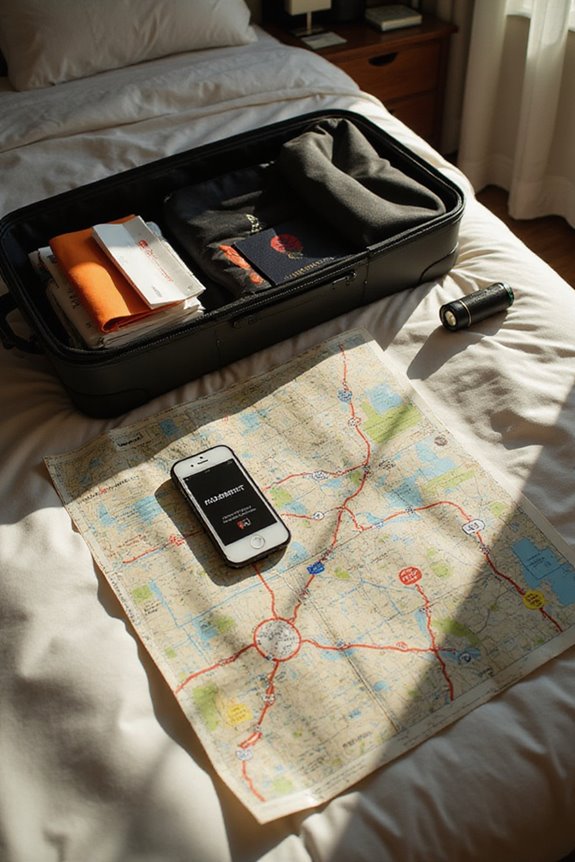
The moment you sense trouble, whether it’s a sudden earthquake or an unexpected civil disturbance, you can feel your heart race. My advice? Evacuate immediately if authorities say so, or if conditions threaten your safety. No time to wait! I always inform someone trustworthy about my destination and arrival time, just in case. Staying calm is key, and following emergency personnel instructions can make a world of difference. Keep an eye on the emergency status; knowing when to bail can save you. I always scout out safe, clear routes to avoid congestion and danger. Look, when it comes to emergency response, sticking to effective evacuation procedures is essential. Just remember, it’s all about staying safe and getting out quickly.
Communication Strategies in Crisis Situations
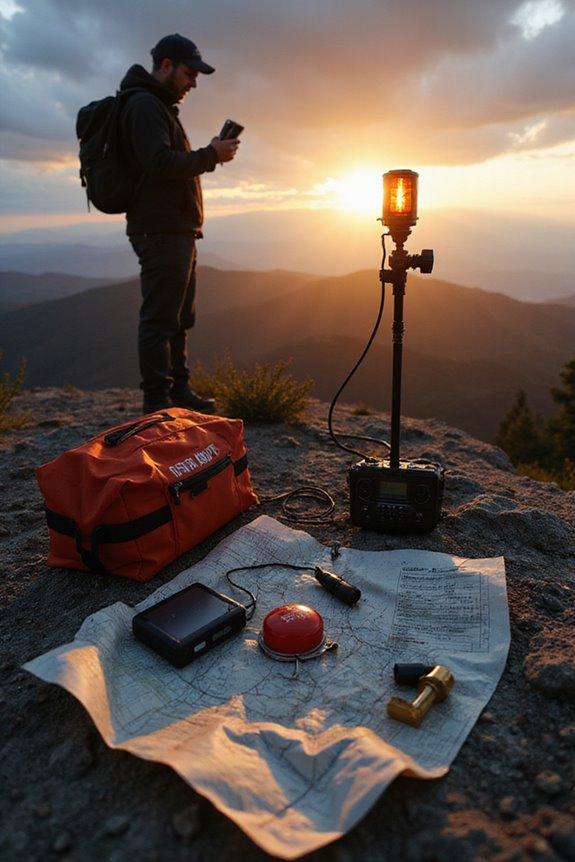
When trouble strikes during your travels, staying connected and informed becomes just as vital as finding your way to safety. I remember a time in a bustling foreign city when I heard sirens blaring, panic setting in. Effective crisis messaging can cut through the chaos, but only if everyone’s on the same page. Establishing clear communication protocols in advance can really make a difference. Think about using multiple channels—text, email, or even social media—to bypass potential communication barriers. It’s important to have messages translated and accessible for everyone, even those with disabilities. Real-time updates keep us grounded, adapting strategies as situations change. Trust me, when alerts come through, it’s like having a lifeline during turbulent times!
Transportation Options for Medical Evacuations
In tense moments, like when I found myself in a bustling city with sirens wailing, knowing my options for medical evacuation could mean the difference between a speedy recovery and a nightmare of complications. I quickly learned that air ambulances are a top choice for immediate needs—they’re equipped with specialized crews and can transport patients while providing critical care. For more localized situations, ground transport, like ambulances or non-emergency medical transportation (NEMT), is a reliable option. Though ground transport is usually more cost-effective, it still faces its own challenges, like timing and patient needs. Ultimately, having these options can be a lifesaver, whether you’re flying high or cruising down the street in search of care.
Navigating Logistics and Challenges
Maneuvering through the chaos of an evacuation can feel like trying to dance through a crowded party without stepping on anyone’s toes. I’ve been there—steering through logistical challenges while the clock’s ticking can be overwhelming. Forgetting to plan transportation coordination can leave you stranded, wondering how to escape safely. Often, I’ve found that knowing the quickest routes and having a backup plan, like local bus schedules or ride-shares, makes a world of difference. Let’s remember those who need special attention—like the elderly or those with disabilities—who might not have easy transportation access. Staying calm and collected can help; clear communication is key to steering through these challenges effectively. And who knows? You might even find a sense of adventure within the chaos!
Health and Safety Practices While Traveling
After managing the logistics of an evacuation, it’s time to shift gears and think about staying healthy and safe while on the move. Trust me, staying vigilant with hygiene practices is essential. I always pack hand sanitizer and use it after touching anything questionable—like those airline pillows that might host a family of germs! Keeping up with sanitation measures, like drinking only bottled water and steering clear of street food in sketchy areas, can really save you from a nasty stomach bug. And don’t forget your travel health kit—band-aids, pain relievers, and essential meds can be lifesavers. Staying informed about local medical facilities lets you relax a bit, knowing help is just around the corner if needed.
Risk Reduction Strategies to Avoid Emergencies
When you’re jetting off to a new destination, it’s not just about the thrill of exploring; it’s also essential to keep your wits about you. Before I travel, I always conduct a thorough risk assessment. I check out real-time travel advisories to stay updated on political climates and local crime rates. Knowing these factors helps me avoid dangerous situations before they arise. I also make sure to book only vetted hotels and airlines. Plus, I equip myself with some local phrases and cultural insights—it makes a world of difference in blending in! Don’t forget to have emergency contacts handy, as knowing who to call can be a lifesaver in unexpected moments. Safety should always come first; after all, adventure is best enjoyed worry-free!
Key Statistics on Emergency Evacuations
Being aware of the potential for emergency evacuations can be a real game changer when you’re traveling. Did you know that about 270 million people faced disasters in 2020 alone? That’s a staggering number! Evacuation statistics show that nearly 31 million were internally displaced, often due to government-led moves. Climate change is ramping up these situations; for example, during Australia’s bushfires, over 65,000 people were evacuated. In my travels, I’ve seen that people in poorer countries are six times more likely to be uprooted. It’s crucial we comprehend these displacement trends when planning trips. Whether it’s a hurricane or wildfire, knowing the facts helps keep us prepared and safe. Let’s face it, planning for emergencies makes life a lot easier!
Frequently Asked Questions
How Can I Find Local Emergency Services While Abroad?
Finding your way in a foreign country feels like walking through a maze. I always jot down local resources and emergency contacts before my trip. Knowing who to call in a pinch brings peace of mind while traveling.
What Should I Keep in My Travel First-Aid Kit?
When packing my travel first-aid kit, I make sure to include essential emergency medications and wound care supplies like adhesive bandages, antiseptic wipes, and prescription meds. It’s all about being prepared for anything!
How Do Travel Insurance Claims Work During Emergencies?
When it rains, it pours; that’s when understanding the travel insurance claim process is essential. I’ve learned to gather documents, fill forms accurately, and stay in touch with my insurer for swift resolutions during emergencies.
Are There Specific Apps for Emergency Situations While Traveling?
Yes, I rely on safety apps for emergency alerts while traveling. The American Red Cross app keeps me informed on disasters, while others like Emergency SOS guarantee I can contact help quickly and efficiently.
What Should I Do if My Travel Insurance Doesn’t Cover Evacuation?
If my travel insurance doesn’t cover evacuation, I’d explore other evacuation options like specialized insurers. I’d also guarantee I have emergency contacts handy and know nearby facilities, just in case I need help.

